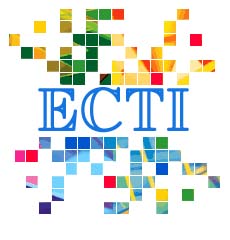Fast Algorithms for Computing Parsimonious Estimates of QoS Measures
Main Article Content
Abstract
In recent publications concerning quality of service (QoS) measures in communication networks several attempts have been made to improve the techniques of computing or estimating the quality of data transfer. Many of the promising results are based on the knowledge of only very few parameters on the traffic situation, some of which are known a priory, others are measured. The paper deals with such parsimonious estimation techniques of QoS measures under the bufferless fluid flow multiplexing (bffm) framework, and concentrates on the efficient computation of them. The proposed fixed-point recursive algorithms are key elements in applying either the implicit formulae or ones containing optimization tasks in real-time environment.
Article Details
This journal provides immediate open access to its content on the principle that making research freely available to the public supports a greater global exchange of knowledge.
- Creative Commons Copyright License
The journal allows readers to download and share all published articles as long as they properly cite such articles; however, they cannot change them or use them commercially. This is classified as CC BY-NC-ND for the creative commons license.
- Retention of Copyright and Publishing Rights
The journal allows the authors of the published articles to hold copyrights and publishing rights without restrictions.
References
[2] P Camarda, D Striccoli, "Bandwidth Estimation of Smoothed VBR Video Streams Exploiting Queueing Networks Theory," Proceeding of SPECTS'02, San Diego, California, USA, July 2002.
[3] M. Reisslein, "Measurement-Based Admission Control: A Large Deviations Approach for Bufferless Multiplexers," Proceeding of ISCC 2000, Antibes, France, July 2000.
[4] G. Seres, A. Szlavik, J. Zatonyi, J. Biro, "Quantifying resource usage - a large deviation-based approach," IEICE Transact. Communicat. (Jpn.) E85-B (1), pp. 938-952, 2002.
[5] S. Imre, K. Hanko, P. Petras, R. Tancsics, "Optimized effective bandwidth based admission control for multi-service cdma cellular networks," Proceeding of the 10th SoftCOM2001, Split, Dubrovnik (Croatia), Ancona, Venice (Italy), pp. 299-304, 2001.
[6] H.Chernoff,"A Measure of Asymptotic Efficiency of Tests of a Hypothesis Based on the Sum of Observations," Ann. Math. Statist. 23, pp. 493-507, 1952.
[7] F.P. Kelly, "Notes on effective bandwidths," in: F. Kelly, S. Zachary, I. Ziedins (Eds.), Stochastic Networks: Theory and Applications, Oxford University Press, Oxford, pp. 141-168, 1996.
[8] M. Grossglauser and D. Tse. A framework for robust measurement-based admission control. In ACM SIGCOMM Symposium on Communications Architectures and Protocols, pages 237-248, Cannes, France, September 1997.
[9] J. Schmidt, A. Siegel, A. Srinivasan, "Chernoff Hoeffding bounds for applications with limited independence," Proceeding of the ACM-SIAM Symposium on Discrete Algorithms, 1995.
[10] C. Courcoubetis, V. A. Siris, and G. D. Stamoulis. Application of the many sources asymptotic and e®ective bandwidths to tra±c engineering. Telecommunication Systems, 12:167-191, 1999.
[11] Z. Heszberger, J. Zatonyi, and J. Biro, "Efficient Chernoff-based resource assessment techniques in multi-service networks," Telecommunication Systems, Volume 20, Issue 1,2, Special Issue: Wide Area Networks Design and Analysis, pp. 59-80, 2002.
[12] Z. Heszberger, J. Zatonyi, and J. Biro, "Performance bounds for rate envelope multiplexing," Performance Evaluation, Volume 48, Issue 1, Special Issue on ATM & IP Networks: Performance
Modelling and Analysis, pp. 87-101, May 2002.
[13] J. Biro, "Novel Equivalent Capacity Approximation Through Asymptotic Loss Analysis," Computer Communications, Special Issue on ATM & IP Networks: Performance Modelling and Analysis, in press.
[14] Z. Heszberger, J. Zatonyi, J. Biro, and T. Henk, "Efficient bounds for bu®erless statistical multi plexing", Proceeding of IEEE Global Telecommunications Conference - GLOBECOM 2000, volume 1, pp. 641-646, San Francisco, CA, USA, Nov./Dec. 2000.
[15] J. Biro, "A New Scalable Estimation for the Logarithmic Moment Generating Function of Network Tra±c Flows", International Journal of Computer Science, Vol. 7. , No. 12. pp. 140-145., 2007.


